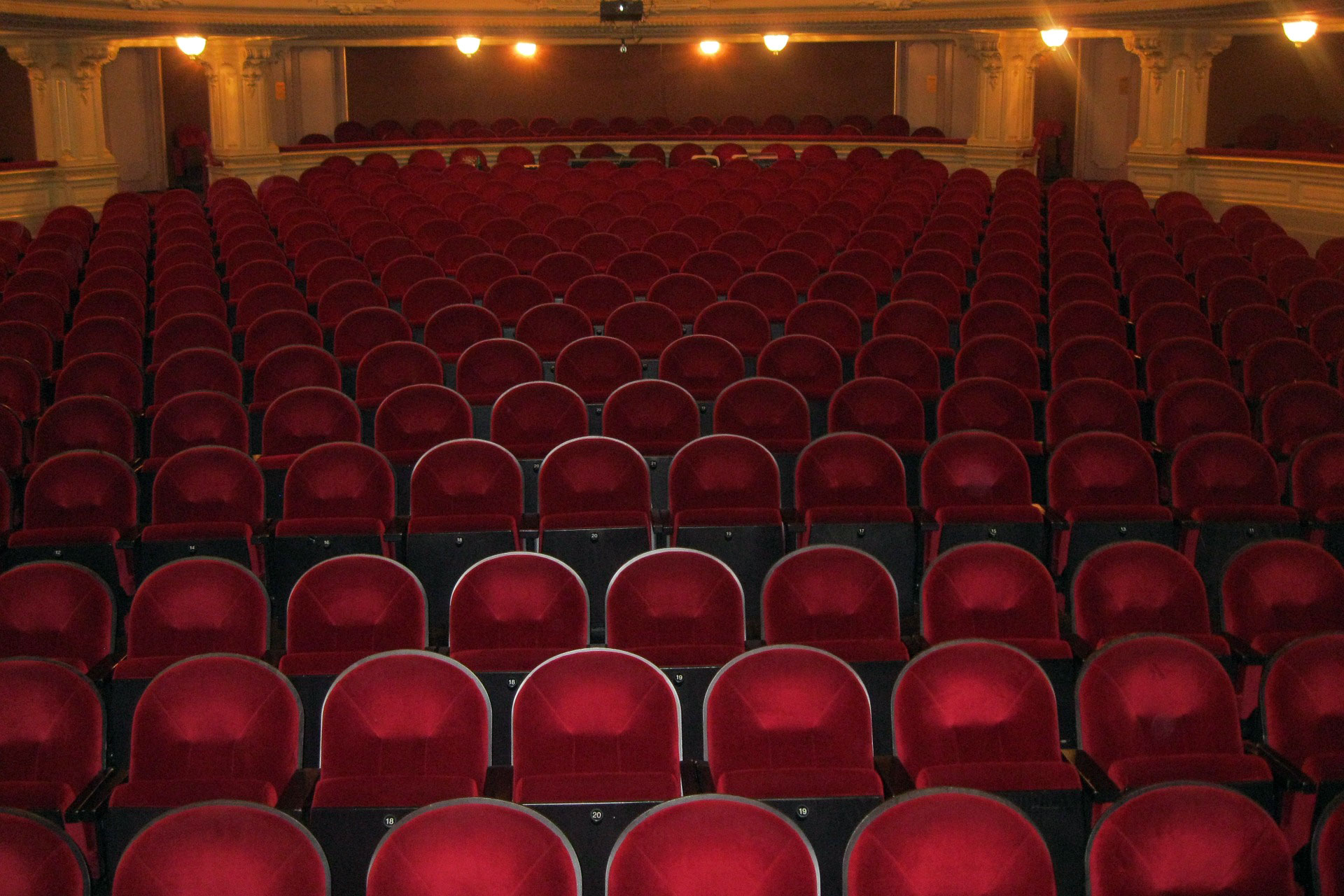Dance Comeback: The Impact of COVID-19 on the Dance Field and the Future of Dance
By Shakira Segundo
The COVID-19 pandemic delivered a critical blow to the world’s economies in 2020. The performing arts industry saw a decline in consumer spending by more than $30 billion.1 The dance field was crippled at the onset of the pandemic in March 2020 and would remain so for the next nine months or more, due to mandated theater and studio closings, and travel and quarantine restrictions.

The dance field is primarily comprised of non-profit organizations and small businesses, which run extremely lean operations dependent on donations from private sources and Federal and local government funding to pay staff and artists, and cover production costs to bring their work to the stage. Artists in the field are also predominantly independent contractors or paid very little in comparison to individuals working in other forms of art and entertainment. These unique factors make workers in the dance industry extremely vulnerable to the slightest change in the environmental, social, or economic landscape. The impact of the COVID-19 pandemic could have decimated a field reliant on physical connections, public participation and attendance, live performance, and ticket sales for its survival. It very nearly did.
From Rebound to Shutdown
Following the 2007-2009 Great Recession, the dance field rebounded in ways that surprised many in the field after a difficult time of economic stagnation for the United States. These are the national unemployment rates with Dancers, and artists extracted to show the comparison to national unemployment rates.2 This growth demonstrated the resilience, adaptability, and relevance of dance in even the most difficult times.

In March 2020, part I of the Dance/USA Coronavirus Impact Survey launched to ascertain the initial impact and response of individuals and organizations in the dance field to the pandemic, specific to the remainder of the performance 2019-2020 season. The response was overwhelming: 647 organizations and individuals replied. The majority of responses come from individuals (349) who expressed panic about losing their primary source of income and uncertainty on whether the artform that they had dedicated their lives to would survive the pandemic.
Of the dance organizations that responded, 85 percent reported they were prepared to make difficult decisions about cancellations and operations in order to weather the pandemic. These organizations collectively anticipated losing approximately $190 million ($2.3 million per organization on average) in earned and contributed revenues from having to end the season prematurely. More than 50 percent reported that, while they would like to continue compensating their artists, they were unsure that they would be able to do so.
Organizations reported that the majority of their subscribed audiences were supportive, with many offering to donate their ticket values back to the organization. The biggest concerns expressed were, of course, health and safety of employees and contractors, along with revenue losses in the face of covering fixed operating expenses and salaries of staff and artists. Dance organizations expressed an urgency to advocate for a government bailout of the dance and performing arts industry along with increased support from individual and foundation donors.
Individual respondents reported that combined they stood to lose $4.9 million in income from the dance field due to the loss of work from commissions, gigs, rehearsals, teaching, and more. Many dance artists described conducting virtual classes or applying for unemployment to supplement their lost income. At the time, only 36 percent had applied for unemployment benefits while 64 percent reported they had not applied or were ineligible to apply due to their independent contractor status. Individual dance artists noted their greatest concern was loss of income and their future in the dance world if the industry collapsed.
A Year Later
In March 2021, Dance/USA launched part II of its Coronavirus Impact Survey, this time with the intent of capturing the actual impact of the pandemic on organizations and individuals. Questions included how they had fared, how they responded to the pandemic, and how do they envision the path forward for the dance field. This survey specifically covered the period from March 2020 through February 2021, asking respondents to compare pre-COVID-19 performance seasons and the current season. Of the 345 respondents, more than half – 214 — were dance organizations, representing about 30 percent of the total dance companies — 710 — in the United States at the end of 20193 as reported by the U.S. Census Bureau.
Dancemaking organizations reported more than 75 percent loss in ticket revenues relative to their pre-COVID season. And 82 percent of companies that toured reported they had not toured; those that were able to tour reported touring fees had fallen an average of 77 percent. Presenters reported 100 percent loss of revenues and companies with schools reported an average loss in tuition revenues of nearly almost 50 percent.
Of responding organizations, 42 percent reported growth in individual support by an average of 70 percent. Another 29 percent reported a decrease in total individual giving of between 5 percent and 30 percent, while 36 percent reported an increase in foundation support of between 5 percent and 30 percent and 21 percent reported a decrease in foundation giving between 5 percent and 15 percent. The majority of organizational respondents reported that corporate support had decreased by 5 percent to 62 percent.
The top actions taken by organizations to manage the financial impact of the pandemic included reducing the number of planned performances and productions; reducing the number of dancer-contract weeks; reducing the number of staff; and furloughing staff, in that order.
They reported a 77 percent decrease in the number of live productions and a 75 percent decrease in the number of holiday productions. Alternately, companies reported a 478 percent increase in pre-recorded productions and a 252 percent increase in virtual or live-streamed productions.
Individual respondents reported a decrease in income for the same period relative to the pre-COVID-19 era of 32 Percent, while 78 percent reported they were able to find other income generating work during the pandemic. As of February 2021, 42 percent of individuals reported they had returned to work physically, virtually or in a combination of the two. And 46 percent reported they applied for unemployment benefits. A U.S. Bureau of Labor Statistics report stated that unemployment rates for the dance field increased exponentially between 2019 and 2020.

Impacts on Physical and Mental Health
Surveyed individuals expressed that their most critical needs during the pandemic were access to mental health care, physical health care and maintenance, and IT/technical equipment and resources.

Responding individuals ranked their need for access to the above resources.
What is clear from these COVID-19 impact surveys is that the dance field in its entirety has been severely affected by this global pandemic. Results indicate massive cancellations; losses in earned income for organizations and individuals; and increased expenses incurred to combat the virus and protect the art form, its creators, and its supporters. The comparative data between the pre-pandemic era, the onset of the pandemic, and the most recent data, tells a definitive story about the economic and social impact of COVID-19 and the efforts of the dance field to rebound from this pandemic.
To be sure, the way the field has thought about dance for the past 50 years will change as a result of the pandemic. Every organization and individual dance artist had to embrace the concept of sharing dance digitally to keep it alive to share with those who enjoy and support the art form. Both individual and foundation donors that were able came forward in unprecedented ways to support dance companies and individual dancers by increasing their giving. In conjunction with advocacy work by Dance/USA and other performing arts organizations in Congress and with local and state governments, the field was able to benefit from Federal and state relief programs to weather the pandemic.

Responding companies reported steps taken to manage loss of revenues and fixed expenses.
The data also show that individuals and organizations with budgets of less than $1 million were hit the hardest, and it will be hardest for them to recover. Unfortunately, some companies will not survive this pandemic, though we will not know the numbers until dance companies begin reporting closures to State and Federal entities. The impact of this pandemic has been exceptionally critical on individuals in the dance field. In addition to the financial impact, individual dancemakers who typically spent hours daily, pre-pandemic, honing their bodies and minds, have been subject to quarantine and isolation that threaten both their livelihood and their artistic future in the dance field. The financial assistance provided from the Federal CARES Act through unemployment relief, stimulus funds, and, for independent contractors, the Small Business Association Paycheck Protection Program (PPP)/Economic Injury Disaster Loan (EIPL) forgiveness programs, lightened the financial blow for many individuals. And, yet, for those dance artists who are not U.S. citizens or permanent residents of the United States, and there are many, the financial impact was and remains devastating.
The other story that is still emerging as recovery and reopening are discussed is the mental health impact/crisis of surviving the COVID-19 pandemic. Individual respondents overwhelmingly stated that their most critical need during the crisis was access to mental health resources. And while this problem is not unique to the dance field — the entire world suffered in some way from lack of connection and physical interaction along with too many unimaginable losses of lives and health experienced. The mental impact will continue long after the pandemic is over. It is imperative that in trying to find ways to survive and thrive post-pandemic, the dance and performing arts field advocate for greater access to mental health support and services.
As the dance world begins to move toward the light at the end of the pandemic tunnel, we see from our survey respondents that the dance field, as ever, is adapting and surviving. Organizations are reopening and dancers and choreographers are returning to studios and stages around the country – albeit with new and enhanced safety measures. Dance organizations, individual artists, service organizations, vendors to the field, audiences, and supporters have galvanized in extraordinary, creative, and novel ways to survive this pandemic. Digitizing dance has brought the art form in all its varieties and genres to audiences who may not have otherwise attended a live dance performance. It will be exciting to observe how audiences and company revenues develop in light of this increased access and awareness.
Of course, an incredible amount of work remains to be done. At this writing, the dance field is but a shadow of what it was at its height, at the end of 2019, but it is encouraging to see the wealth of information and support that is available. During this time Dance/USA will continue to monitor and quantify the impact of the pandemic on the industry as recovery, reopening and re-invention continues.
To access both the initial study and the follow-up findings, please find the materials on the Dance/USA website here.
Footnotes
- Real Personal Consumption Expenditures by Type of Product, U.S. Bureau of Economic Analysis, Office of Research & Analysis, National Endowment for the Arts, June 2021. https://apps.bea.gov/iTable/iTable.cfm?ReqID=19&step=2#reqid=19&step=2&isuri=1&1921=underlying
- Arts and Cultural Production Satellite Account (ACPSA), U.S. Bureau of Economic Analysis and National Endowment for the Arts, December 2019. https://www.arts.gov/sites/default/files/ADP28-Data-Tables-2014-2019.zip
- 2019 County Business Patterns, U.S. Census Bureau. https://data.census.gov/cedsci/table?q=CBP2019.CB1900CBP&n=71112%3A711120%3AN0600.00&tid=CBP2019.CB1900CBP&hidePreview=true
 Shakira Segundo has served as the research director for Dance/USA for the past four years. She is also the founder and CEO of Kardinal Accounting & Finance, Inc. (15 years) and Segundo Strategies, LLC (four years), two firms that offer financial, strategic, operational and growth management to small business owners and non-profit organizations.
Shakira Segundo has served as the research director for Dance/USA for the past four years. She is also the founder and CEO of Kardinal Accounting & Finance, Inc. (15 years) and Segundo Strategies, LLC (four years), two firms that offer financial, strategic, operational and growth management to small business owners and non-profit organizations.
As research director of Dance/USA, former CFO and interim executive director of The Washington Ballet and business manager/director of finance for Orlando Ballet, Segundo has spent the past 15 years serving the dance field. Segundo also serves on the board of Dance Loft as treasurer. Her extensive experience in dance administration and research and her passion for dance has made her the resident expert in the field.
Segundo collectively has more than 17 years of experience in leading nonprofits and corporations through complex accounting, finance, operational and cultural restructuring. She holds master’s degrees in accounting and finance and undergraduate degrees in information technology and tourism management.
____
We accept submissions on topics relevant to the field: advocacy, artistic issues, arts policy, community building, development, employment, engagement, touring, and other topics that deal with the business of dance. We cannot publish criticism, single-company season announcements, and single-company or single artist profiles. Additionally, we welcome feedback on articles. If you have a topic that you would like to see addressed or feedback, please contact communications@danceusa.org.
Disclaimer: Opinions expressed in guest posts do not necessarily represent the viewpoints of Dance/USA.





